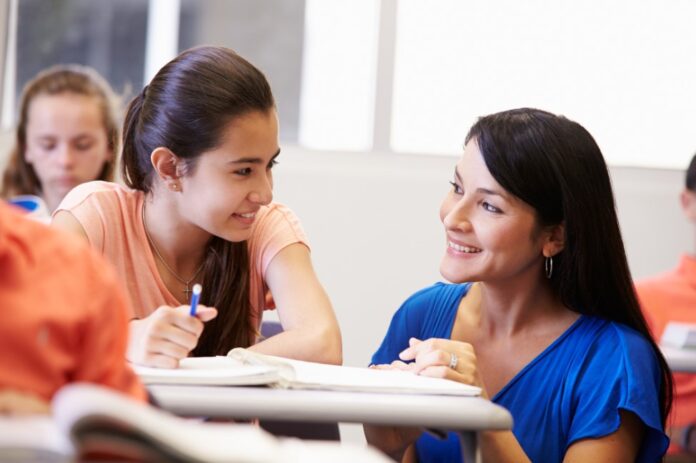
Engaging a classroom full of students can feel like an uphill battle. Teachers must contend with varied learning styles, multiple distractions, and sometimes even disinterest in the subject.
Yet, the first step in any effective learning experience is grabbing students’ attention. From there, the true work of education begins—imparting knowledge and skills that will last a lifetime.
So, how do we go about making the classroom not just a place of education but a space where learning is a joyous experience? Here are innovative strategies to do just that.
Start With a Hook
An engaging introduction sets the stage for the rest of the lesson. When you walk into the classroom, your initial words and actions act as a “hook,” a means of grabbing your students’ attention and reeling them into the subject matter.
You could start with an unusual fact related to the lesson or perhaps an intriguing question that challenges preconceptions. By doing this, you spark curiosity and pave the way for an engaging classroom experience, turning the attention of your students from passive to active within moments.
Use Storytelling

Stories have been mankind’s primary vehicle for conveying complex information for thousands of years. This method resonates with our cognitive architecture. When teachers incorporate storytelling into their lessons, they give academic content a compelling framework.
Instead of isolated facts or principles, students get a narrative that provides context and emotional resonance. Imagine teaching a science lesson through the story of a scientist’s journey to a breakthrough, or history through the eyes of someone who lived it. This not only grabs attention but also aids memory retention.
Leverage Real-World Connections
“Why do I need to know this?” is a question every teacher hears. Students often struggle to see the relevance of what they are learning, which significantly dampens engagement. Making real-world connections bridges this gap. A math teacher could explain how algebraic equations are vital in coding and software development.
Similarly, a literature teacher can relate themes from classic works to current social issues. This approach not only grabs attention but also provides a strong rationale for why students should engage with the subject matter.
Activate Prior Knowledge
Every student brings a unique set of experiences and prior knowledge to the classroom. Activating this pre-existing knowledge can serve as a springboard into new content. For example, when introducing a lesson on ecosystems, a teacher might ask students to share what they already know about food chains or biodiversity.
This strategy not only validates students’ prior knowledge but also helps them link new information to existing cognitive frameworks, facilitating better understanding and retention.
Use Visual Aids and Props
Most people are visual learners to some extent. Infographics, diagrams, slideshows, and other visual aids can complement verbal instruction, providing students with multiple avenues for understanding the material. Props can be equally effective. For instance, if you’re teaching about the Civil War, bringing in artifacts or replicas like uniforms, weapons, or even period-specific currency can transport students back in time, offering a tactile connection to the subject matter.
Engage with Technology
Our world is increasingly digital, and classrooms are no exception. Utilizing technology can make lessons more engaging and interactive. Tools like digital flipbooks created using Issuu’s flipbook maker can turn a dull lesson plan into an interactive multimedia experience. Incorporate videos, links, or interactive quizzes in your digital flipbooks to keep students engaged. By doing this, you cater to their comfort with technology and potentially increase their engagement and understanding.
Introduce Gamification Elements
The term “gamification” might sound like a buzzword, but its underlying principles are rooted in basic psychology. When students see learning as a game, complete with rewards, challenges, and leaderboards, their motivation to participate often increases. This doesn’t mean turning your classroom into a virtual playground but integrating elements that make the learning process more interactive and rewarding.
For instance, setting up a point system for participation or ‘leveling up’ after mastering a unit can foster an environment of competition and achievement. These elements tap into the students’ innate desire for reward and recognition, making the learning process more engaging.
Invite Guest Speakers
Bringing in a guest speaker can add a new layer of interest to your lessons. Whether it’s a local author for a literature class or a scientist for a biology lesson, the infusion of new perspectives and experiences can reinvigorate a flagging class. Guest speakers also offer the chance for students to hear about real-world applications of classroom knowledge, which reinforces the subject’s relevance.
Organize Group Activities
Social interaction is a powerful tool for engagement. Group activities like collaborative projects, breakout discussions, or team-based challenges encourage students to share ideas, challenge each other, and construct knowledge collectively. This is particularly useful for complex subjects where different perspectives can be beneficial. Group activities also build essential skills like collaboration, problem-solving, and public speaking.
Pose Open-Ended Questions

Direct questions that demand more than a “yes” or “no” answer can stimulate critical thinking. Open-ended questions require students to synthesize what they’ve learned, form an opinion, and articulate it clearly. This type of questioning also promotes active class participation, as each student might have a unique perspective to share, thereby creating a rich, multifaceted dialogue around the topic at hand.
Inject Humor
Laughter is a universal language. Incorporating humor into your teaching can not only make the classroom a more enjoyable place but also facilitates learning. Humor relaxes people, reducing stress and potentially increasing retention of information. But be cautious—what’s funny to one person might not be so for another, so always be sensitive to your students’ reactions.
Offer Choice
Autonomy is a powerful motivator. By giving students some degree of choice in their learning—be it the topic of a research project, the focus of a group discussion, or even the format in which they’d like to be assessed—you cater to their individual interests and aptitudes. This personalized approach can significantly boost engagement levels, leading to a more productive and enjoyable learning experience for everyone involved.
Provide Immediate Feedback
Timely feedback is crucial for keeping students engaged. Knowing where they stand helps them gauge their strengths and weaknesses, and provides direction for future efforts. Technology has made it easier than ever to provide real-time feedback through digital assessments, polls, and quizzes, allowing for adjustments to teaching methods and lesson plans on the fly.
Foster Emotional Safety

While it may not seem immediately apparent, emotional safety can play a significant role in grabbing and maintaining students’ attention. In an emotionally safe environment, students feel free to express their thoughts, ask questions, and make mistakes—all integral parts of the learning process.
Establishing such an atmosphere is crucial to set up ground rules against judgment and ridicule, and encourage open dialogue and respect for diverse opinions. Doing so doesn’t just make students feel secure; it fosters a collective sense of ownership and community in the classroom. When students feel emotionally safe, their attentiveness and enthusiasm for learning naturally increase.
Summing Up
Educators face the daunting but rewarding task of engaging young minds. It requires a blend of creativity, adaptability, and a keen understanding of individual learning styles. By employing these techniques to grab your students’ attention, you’re not just teaching them facts or theories; you’re creating an enriching environment where learning becomes a joyous journey of discovery.











